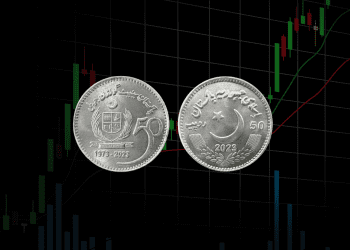Bitcoin (BTC) startled the markets on Wednesday with a robust upward surge during the early hours of the American trading session. This sudden movement followed the release of US inflation data, which had a notable impact on investor sentiment.
The April inflation reading by the US Bureau of Labor Statistics (BLS) prompted a significant response in the Bitcoin market. According to the report, inflation decreased slightly from 3.5% to 3.4% on a yearly basis, as measured by the Consumer Price Index (CPI). This figure aligned with market expectations. Additionally, the annual core CPI, which excludes volatile food and energy prices, also experienced a decline from 3.8% to 3.6% during the same period.
The unexpected dip in inflation figures seemingly reassured investors, leading to renewed confidence in Bitcoin. The cryptocurrency market often responds to macroeconomic indicators, and the decline in inflation appeared to fuel optimism among traders.
As Bitcoin continues to navigate through various market dynamics, including economic data releases and broader financial trends, investors are closely monitoring its price movements for potential opportunities and risks.
For more insights into Bitcoin’s price outlook and its correlation with other assets such as GameStop stock, investors are exploring the potential downstream effects on BTC and altcoins in the wake of significant market events.
BITCOIN PRICE SURGE TRIGGERS LIQUIDATIONS AMID MARKET SENTIMENT
Following the surge in Bitcoin’s price, 53,079 traders faced liquidation, according to reports from Coinglass. The total liquidations amounted to a staggering $120.55 million.
The rise in Bitcoin’s price is attributed to speculation and market sentiment. Traders and investors interpret the news of softened inflation as a signal that central banks may continue to maintain loose monetary policy, potentially benefiting riskier assets like Bitcoin.
In technical analysis, Bitcoin’s price has demonstrated a significant uptrend, marked by a massive green candle in the one-day timeframe, indicating robust buying pressure. This uptrend follows a sequence of lower highs, hinting at a potential change in market structure.
For this change to materialize, Bitcoin’s price must break and maintain a stable close above the $65,500 threshold on the one-day timeframe. Supporting this bullish momentum are indicators such as the Relative Strength Index (RSI), which shows higher lows, and the Awesome Oscillator (AO), where histogram bars are green and pulling toward positive territory, indicating growing bullish sentiment.
Additionally, the DXY Compare indicator, reflecting the performance of the US dollar (USD), continues to decline. This suggests that investors are more inclined to invest in riskier assets like Bitcoin amid reduced uncertainty surrounding the USD.
Conversely, a rejection from the $65,500 level could trigger a retraction in Bitcoin’s price. If the price slips below $60,630, it may prompt panic selling, potentially driving Bitcoin lower to $58,000 or even the May 1 lows of $56,552. Such a scenario would represent a decline of nearly 13% from current levels.

















